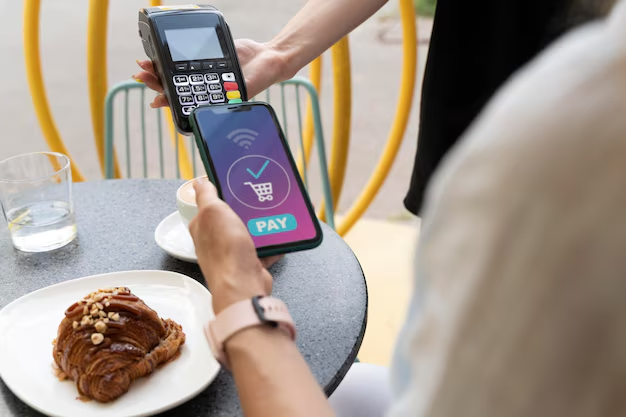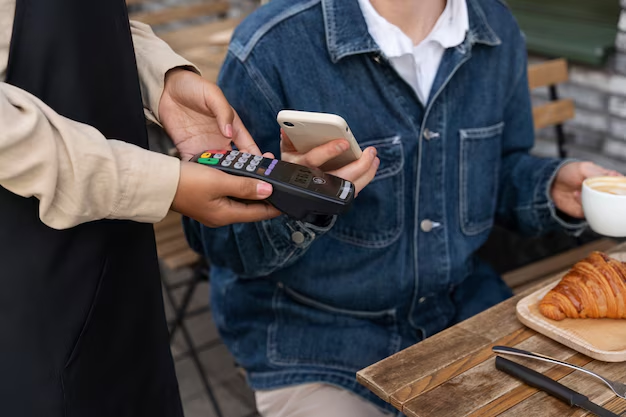In recent years, the way consumers pay for goods and services has evolved significantly. One of the most impactful advancements in payment technology is the introduction of contactless payments. This feature has revolutionized the credit card industry, offering users a faster, more convenient, and secure way to make purchases. As digital transactions become increasingly popular, contactless payments have emerged as a key player in modern credit card usage.
What Are Contactless Payments?
Contactless payments, also known as tap-and-go payments, enable cardholders to make transactions without physically inserting or swiping their cards. Instead, users can simply tap their credit cards or smartphones on a point-of-sale (POS) terminal equipped with Near Field Communication (NFC) technology. This process is quick, seamless, and highly efficient, eliminating the need for PINs or signatures for small purchases.
How Contactless Payments Work
When you make a contactless payment, your credit card uses NFC technology to transmit encrypted data to the payment terminal. The card is powered with a chip, and once it is brought near the terminal, it communicates wirelessly, confirming the transaction. The transaction is processed instantly, and a receipt is often generated as proof of payment.
The Benefits of Contactless Payments
- Speed and Convenience: The primary advantage of contactless payments is their speed. Transactions are completed in seconds, making them perfect for quick purchases, whether at coffee shops, public transportation, or retail stores. This reduces waiting times for both customers and merchants.
- Enhanced Security: Although some people initially questioned the security of contactless payments, modern credit cards are equipped with encrypted chips that ensure a secure transaction. These payments use tokenization, meaning the data exchanged between your card and the terminal is unique for every transaction, adding an extra layer of protection against fraud.
- Hygienic and Touch-Free: In light of recent global health concerns, consumers are increasingly opting for contactless payments due to their hygienic nature. By eliminating the need for physical contact with payment terminals, contactless payments minimize the risk of spreading germs, providing peace of mind to both buyers and sellers.
- Global Acceptance: Contactless payment systems are now widely accepted around the world, from major retailers to public transport systems. As technology continues to expand, cardholders can use their contactless-enabled credit cards virtually anywhere, making international travel much more convenient.
- Integration with Mobile Wallets: Many credit card companies have partnered with mobile wallet providers such as Apple Pay, Google Pay, and Samsung Pay, enabling cardholders to use their smartphones or smartwatches to make contactless payments. This offers even greater flexibility and convenience, as users don’t need to carry their physical cards.
Impact on Modern Credit Card Usage

As contactless payment technology has become mainstream, it has influenced the way consumers view and use their credit cards. People now expect quick, hassle-free payment options, which has led credit card issuers to innovate and upgrade their offerings. With more people adopting mobile wallets and contactless cards, traditional forms of payment, such as cash or manual swiping, are becoming less common.
Moreover, with the rise of online and in-app purchases, credit card issuers have integrated contactless payments into these platforms as well. This allows for smoother transactions, reducing the friction that often comes with entering card details manually.
The Future of Contactless Payments
Looking ahead, contactless payments are likely to become even more advanced, with the possibility of integrating biometric authentication methods such as fingerprint scanning or facial recognition. This will enhance security further while making payments even more seamless.
Additionally, we can expect more businesses, especially in emerging markets, to adopt this payment method as infrastructure continues to develop. The ability to make fast, secure, and convenient payments will continue to shape consumer behavior, creating a world where cash and cards might one day be a thing of the past.
Conclusion
Contactless payments have revolutionized the way we make purchases, offering an efficient, secure, and convenient alternative to traditional credit card transactions. With benefits like enhanced security, speed, and global acceptance, this payment method has earned its place in modern financial ecosystems. As technology continues to evolve, contactless payments will likely remain a cornerstone of the future of finance, offering consumers even more innovative ways to manage their spending.
FAQs
Q. What is the main benefit of contactless payments?
The primary benefit of contactless payments is the speed and convenience they offer. Transactions are completed in seconds, reducing waiting times and providing a seamless payment experience.
Q. Are contactless payments secure?
Yes, contactless payments are secure. They use encrypted chips and tokenization, meaning the data transmitted between the card and terminal is unique for every transaction, making it harder for fraudsters to access sensitive information.
Q. Can I use my smartphone for contactless payments?
Yes, smartphones equipped with mobile wallets like Apple Pay, Google Pay, or Samsung Pay can be used for contactless payments, making it even more convenient as you don’t need to carry a physical card.
Q. Do all merchants accept contactless payments?
Most merchants worldwide have adopted contactless payment systems, especially in major cities and retail locations. However, smaller businesses or locations in rural areas may not yet support this technology.
Q. Will contactless payments replace traditional credit cards?
While contactless payments are becoming more popular, traditional credit cards are still widely used. However, the future may see a greater shift toward contactless transactions, especially as mobile wallets continue to grow in popularity.
